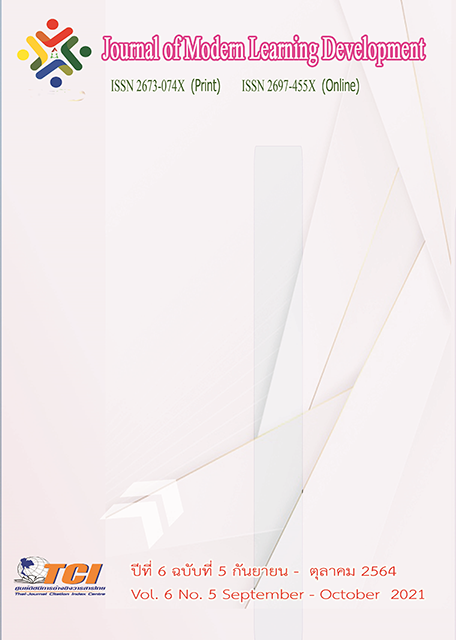Disaster Relief With Ratanasutta
Main Article Content
Abstract
this academic article The objectives of this study were to study disaster relief that appeared in Buddhist scriptures and analyze disaster relief by Ratana Sutra. It was found that disasters in Buddhism It is a natural phenomenon. There are 4 types: fire, flood, storm and famine. There are 2 main causes: natural causes. Caused by the elements of water, wind and fire, caused by greed, hatred, and moha, affecting both the physical and mental threads to humans and all living beings on earth Especially in the current era when disasters caused by the epidemic of coronavirus (Covid-19) both in the country and abroad.
Ratana Sutta is a sutra that the Buddha used to chant to eliminate disasters during the Buddha's birth. He advised the Thera to pay homage to the virtues of the Ratna, namely Buddharatana, Dharmaratana, and Sangharatana, and to bless these beings with good health. cause peace of mind Reduce the suffering from the disaster caused by the Covid-19 epidemic situation, making it auspicious. and free from all kinds of dangers and can be used to improve life, such as 1) mental development, which is to reduce discouragement, etc., causing the mind to be unclear, fuzzy 2) physical development, such as helping to balance the body, making it mindful, as well as being immune to disease 3) physical development Social causing unity in society 4) intellectual development cause intelligence as soon as the truth Right understanding of the Three Jewels: knowing sin-benefit-punishment-benefit-not-benefit Solve problems with intelligence If praying There is vipassana meditation. It will be the highest mental development.
Article Details
References
พระครูปลัดสุวัฒนธีรคุณ (เทอด ญาณวชิโร). (2543). พุทธานุภาพ อานุภาพของพระพุทธองค์เรียนรู้พุทธธรรมจากพระพุทธมนต์ เพื่อชีวิตดีงาม. (พิมพ์ครั้งที่ 18). กรุงเทพมหานคร: สำนักพิมพ์อนันตะ ฉบับธรรมทาน.
พระมหาโกมล กมโล และคณะ. (2561). ศึกษาวิเคราะห์บทบาลีในรตนสูตร ตามแนวคัมภีร์สัททาวิเสส. วารสารบัณฑิตศึกษาปริทรรศน์. 14 (2), 43-54
มหาจุฬาลงกรณราชวิทยาลัย. (2539). พระไตรปิฎกภาษาไทย ฉบับมหาจุฬาลงกรณราชวิทยาลัย. กรุงเทพมหานคร: โรงพิมพ์มหาจุฬาลงกรณราชวิทยาลัย.
มหาวิทยาลัยมหาจุฬาลงกรณราชวิทยาลัย. (2556). บทสวดมนต์รตนสูตร. พระนครศรีอยุธยา: สำนักพิมพ์มหาวิทยาลัยมหาจุฬาลงกรณราชวิทยาลัย.
ราชบัณฑิตยสถาน. (2546). พจนานุกรมฉบับราชบัณฑิตยสถาน พ.ศ.2554. กรุงเทพมหานคร: สำนักพิมพ์นานมีบุ๊คส์
ศิริพร ทัศนศรี. (2557). พุทธวิธีการรักษาโรคด้วยโพชฌงค์ : ผลแห่งการปฏิบัติหรือมหัศจรรย์แห่งมนต์ คาถา. วารสารครุศาสตร์ปริทรรศน์ฯ. 1 (1), 134-145.


